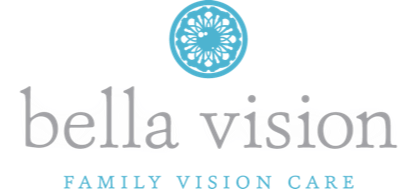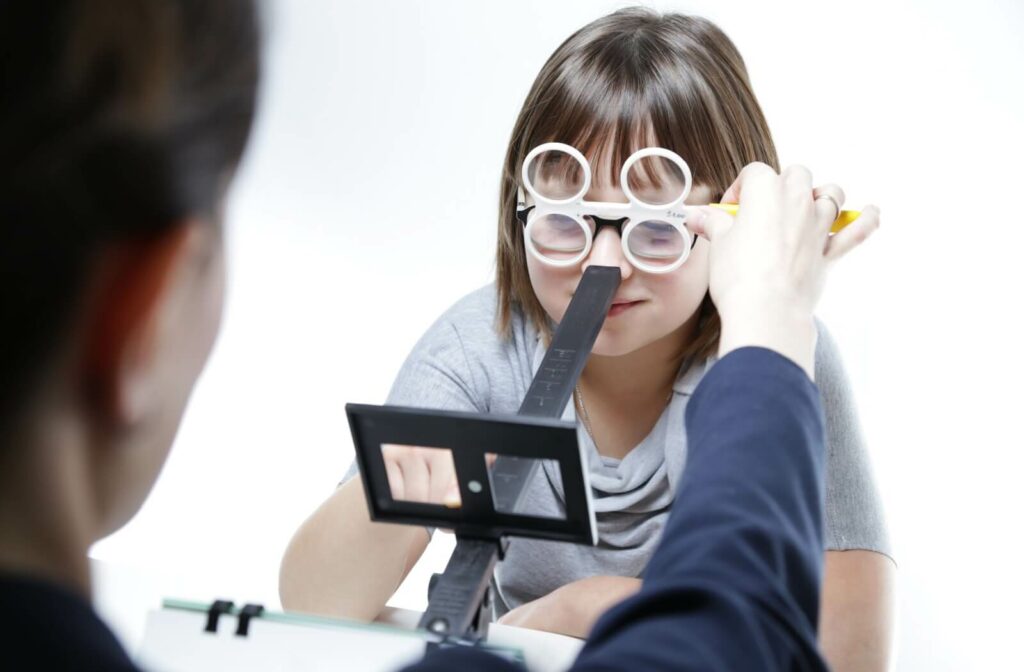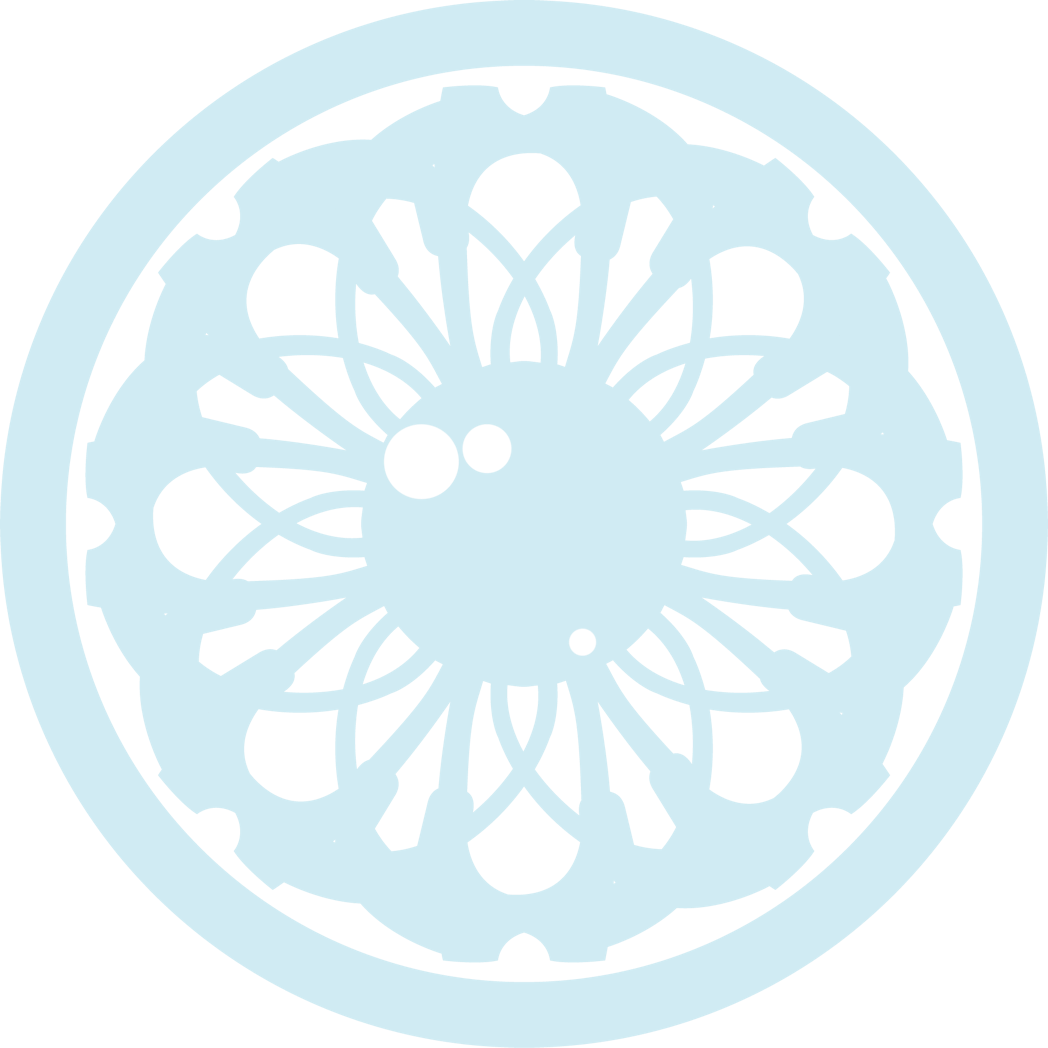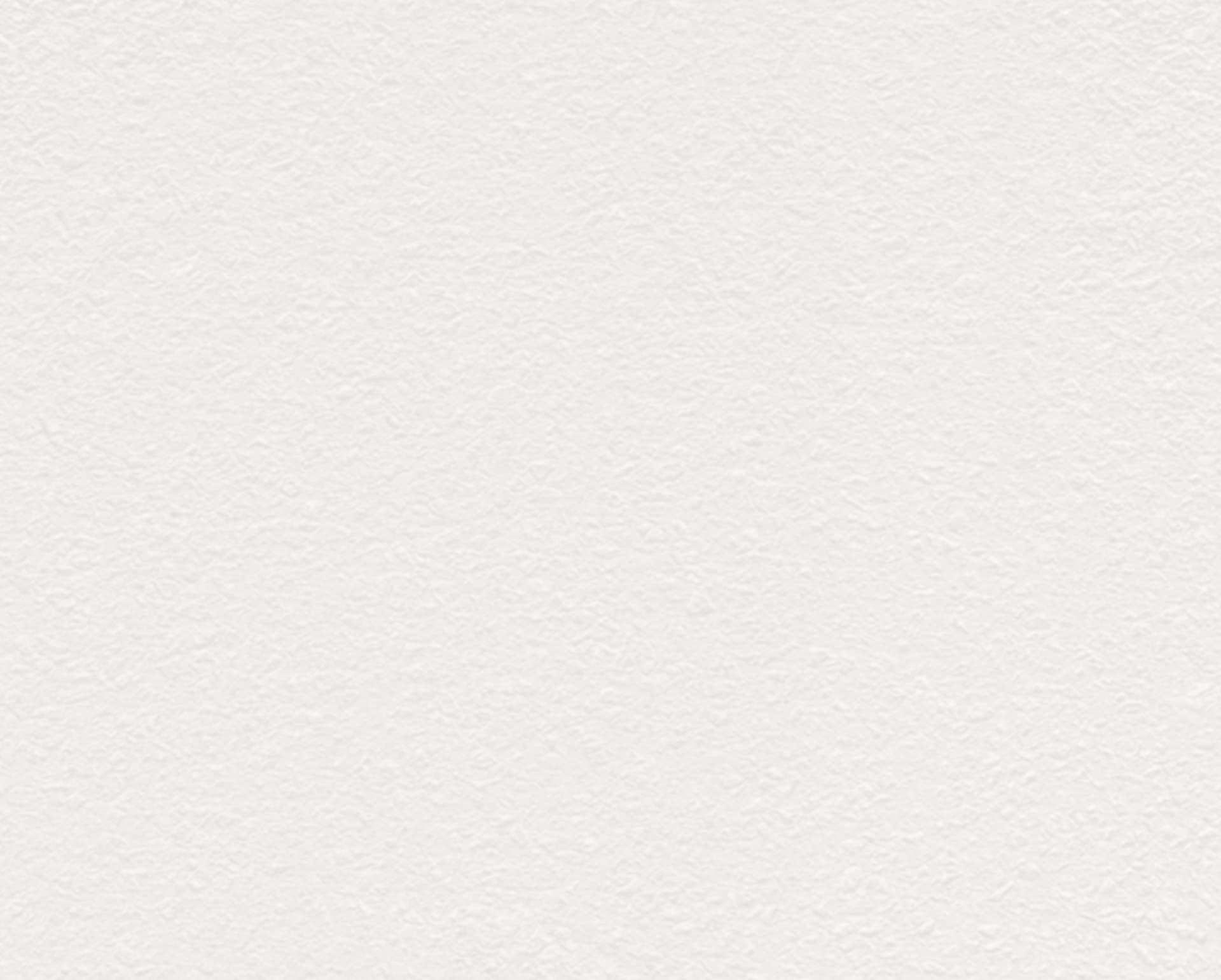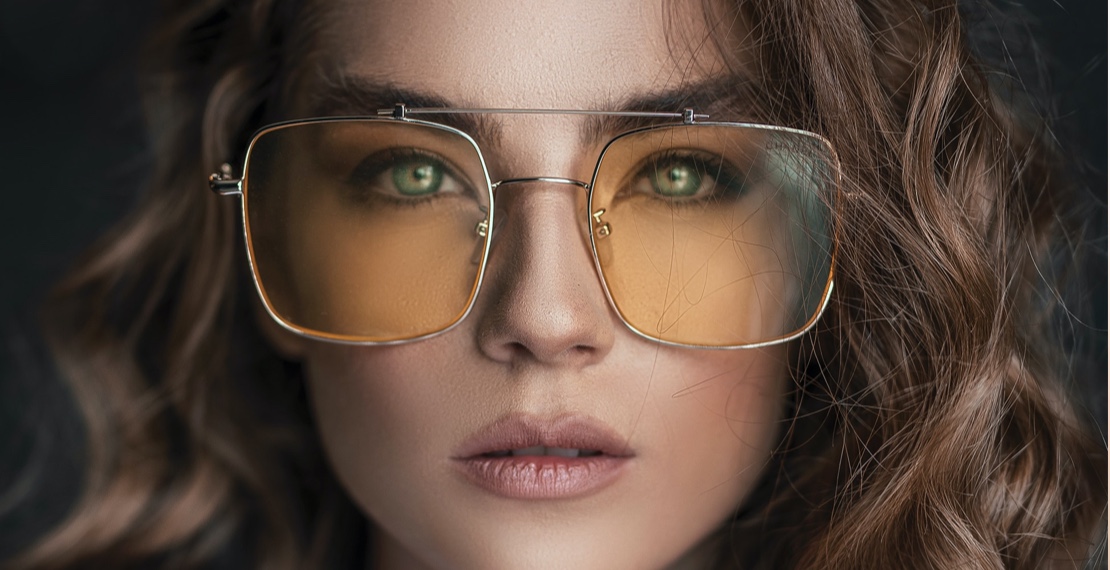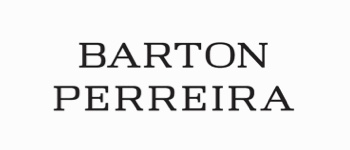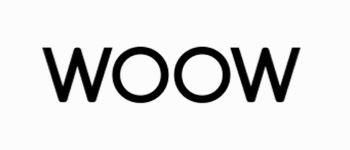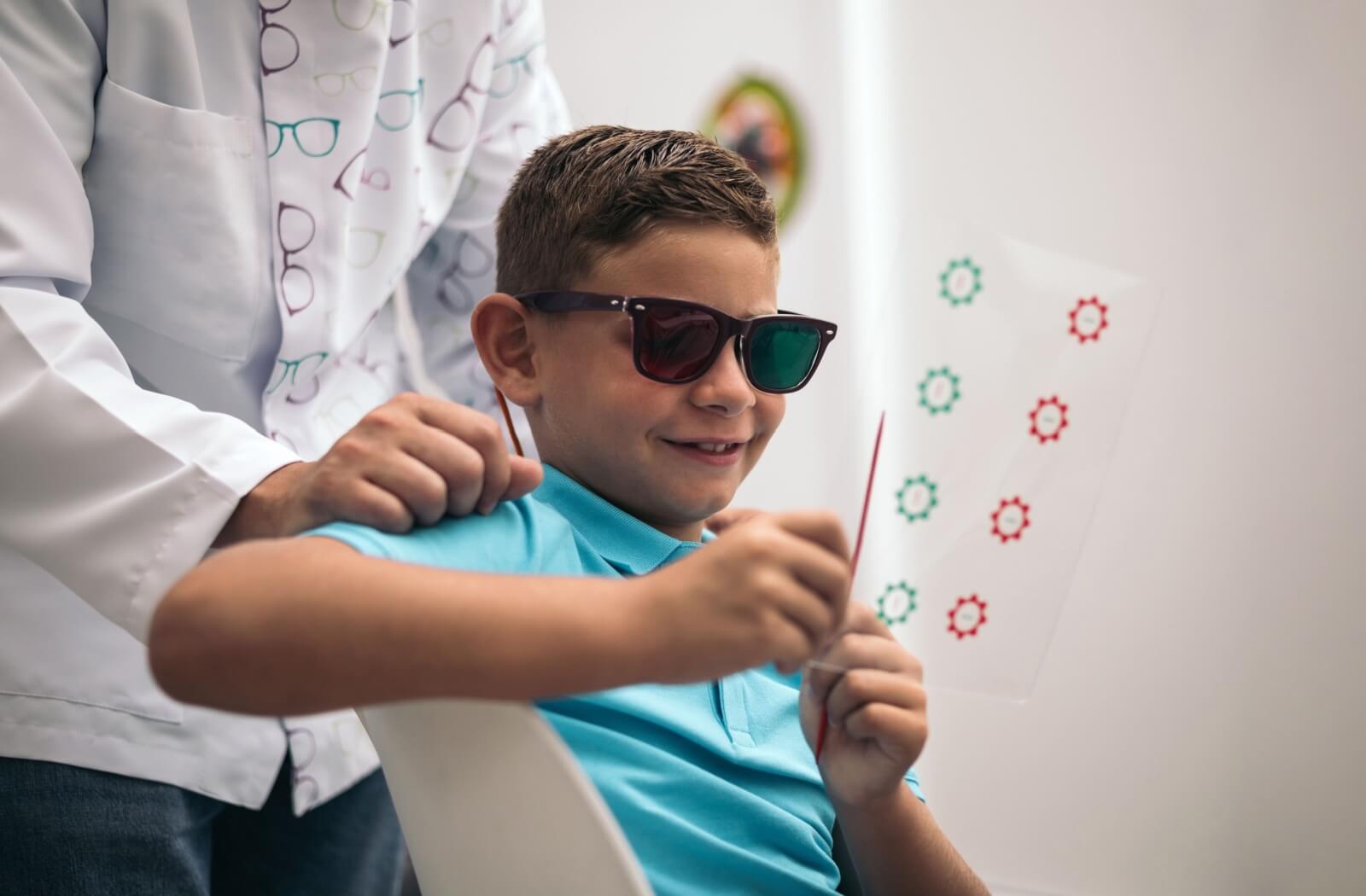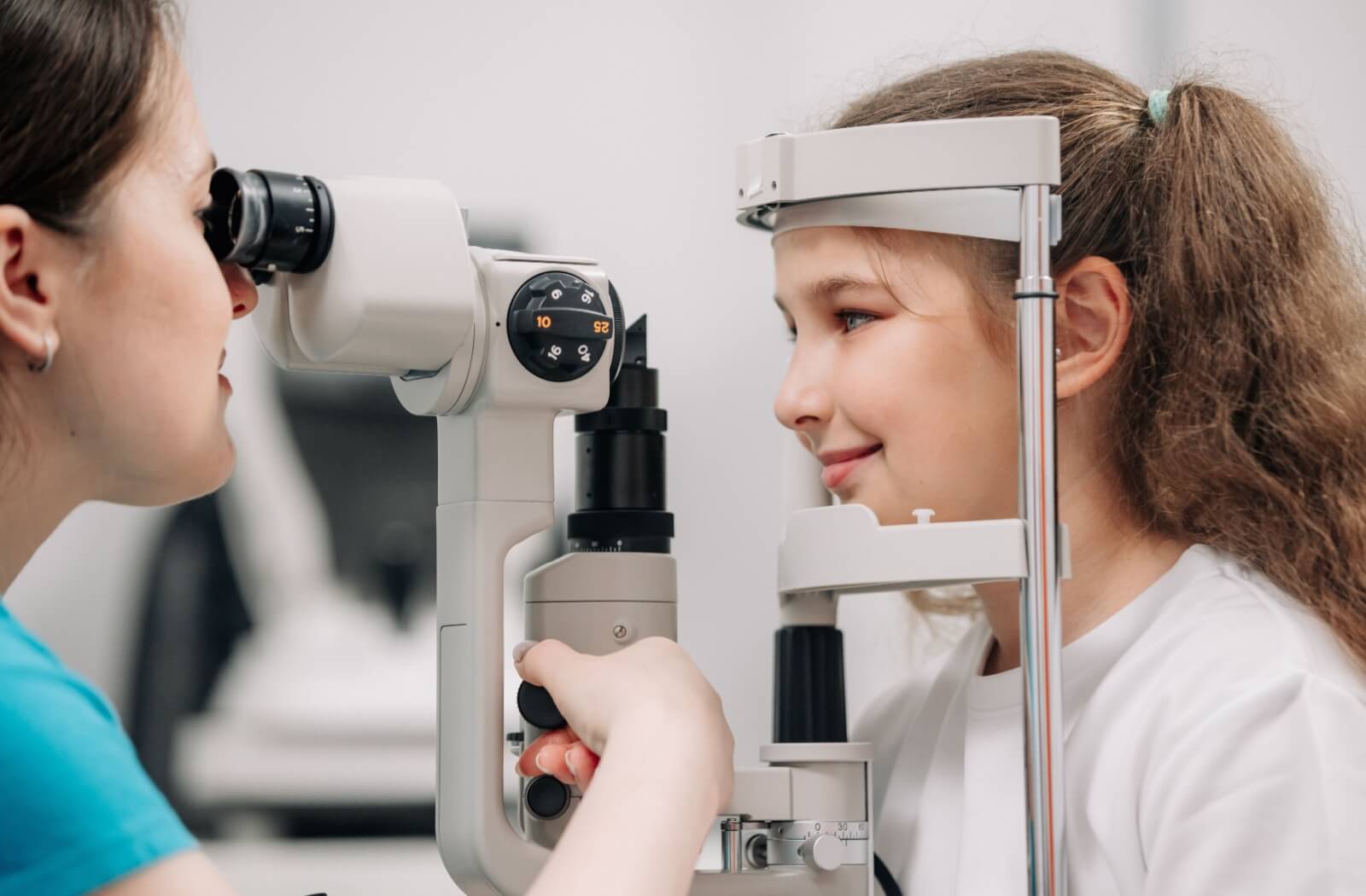Struggling with reading can be discouraging for both children and their parents. While difficulties in reading are often attributed to cognitive or educational gaps, vision-related challenges often are overlooked. Binocular Vision Dysfunction (BVD) is a condition where the eyes and brain do not accurately communicate with each other. This includes eye tracking, eye focusing and eye alignment – all of which influence visual perceptual skills and give us information about the world around us. BVD affects approximately 1 in 5 children and can have symptoms that mimic ADHD, dyslexia and behavioral issues. Children with binocular vision dysfunction often do not realize that seeing the words move on the page is not normal. They often perceive that everyone sees like they do. This is where vision therapy comes in. Optometric Vision Therapy aims to improve basic binocular skills that are needed for reading, comprehension and classroom success.
The Link Between Vision & Learning
As an optometrist who specializes in binocular vision, I have had the privilege of examining thousands of children over the course of my career. I have witnessed first hand how the ever-increasing demands of technology have changed how our children learn in the classroom, how they socialize and communicate. Oftentimes, vision is over-simplified to only visual acuity, which is how well you can see a letter on a chart across the room. If we only use visual acuity as a measure of visual function, we will fall short every time. Without looking at the “whole child”, we will continue to miss out on critical binocular skills that are needed for not just success in the classroom, but in life.
Most people do not know that approximately 80% of what a child learns in school involves the visual system – both the physical process of eye movements, eye focusing (accommodation) and the neurological processing of that sensory information. From reading assignments to whiteboard notes, children rely heavily on their vision to absorb and interpret information. When their visual system isn’t working efficiently, this can hinder their ability to learn and succeed in the classroom.
Children with untreated vision problems may exhibit:
- Difficulty understanding written text
- Trouble focusing on printed materials or copying from the board
- Fatigue when reading or studying
- Challenges with comprehension
- Behavior issues including avoidance, frustration and defiance
- Delayed development including motor delays, clumsiness and speech
- Sensory issues
These issues can often mimic symptoms of learning disabilities, such as dyslexia or attention deficit disorders, leading to potential misdiagnoses.
Recognizing Vision-Related Challenges
I recommend if you suspect a vision issue, to start observing your child’s behaviors. Here are some common signs that vision problems can affect reading abilities:
- Losing their place while reading
- Skipping or re-reading lines in text
- Complaints of headaches or eye strain
- Closing one eye or tilting their head while reading
- Difficulty recognizing words or understanding content
- Avoidance of books and other reading activities
If these signs sound familiar, schedule a comprehensive eye exam and we can have a look at your child’s eyes.
What Is Vision Therapy?
Vision therapy is a customized, non-invasive treatment program designed to improve visual skills necessary for not just classroom success, but everyday life. Unlike glasses or contact lenses, which aim to improve visual acuity by accounting for refractive errors like nearsightedness or astigmatism, vision therapy aims to enhance the way the eyes and brain work together.
Vision therapy involves a series of guided exercises that are overseen by your eye doctor and vision therapist. Activities are prescribed based on the patient’s individual diagnosis and unique needs. These exercises are designed to improve the eye-brain connection by working with the natural neuroplasticity of the brain. Think of vision therapy as a workout plan—but for your child’s eyes.
How Does Vision Therapy Improve Reading Skills?
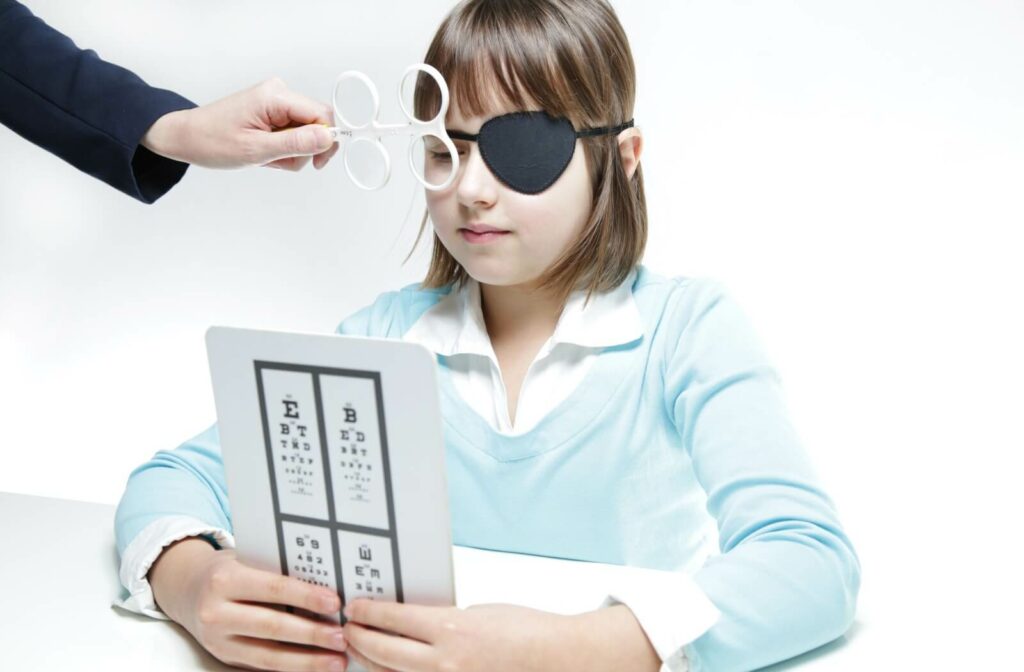
Vision therapy directly targets the visual skills required for effective reading.
Eye Tracking
Strong reading skills require smooth and accurate eye movements to follow lines of text. Children with poor eye tracking may have difficulty copying from the board, lose their place or skip words. Vision therapy aims to improve spatial awareness, periphery and eye movements which increases not only reading speed but comprehension.
Improving Focusing Ability
Accommodation, or eye focusing is the ability to see clearly at all distances. In the classroom, think about how quickly the eyes have to change focus while reading books or looking from a screen to a notebook. Vision therapy enhances a child’s focusing ability, making it easier to transition between distances without discomfort.
Strengthening Binocular Vision
Binocular vision refers to the 2 eyes working together as a team to provide the brain with one single clear image. When this coordination is off, children may experience double vision or visual confusion. Vision therapy improves binocular vision, reducing these challenges and improving overall reading clarity.
Improved Visual Processing
Reading isn’t just about seeing the letters on the page or screen. Vision is a complex neurological process where light rays are transmitted through the eye via the cornea, lens, retina and into the primary visual cortex within the occipital lobe of the brain. Processing visual information allows you to understand, interpret and give meaning to what you see. Vision therapy aims to improve visual processing skills including visual spatial skill, directionality, laterality, visual closure and visual form constancy just to name a few. Getting Started with Vision Therapy
To determine if vision therapy is right for your child, the first step is a thorough comprehensive eye examination. We assess binocular visual skills and can identify any potential challenges that could be contributing to academic struggles.
What to expect if vision therapy is prescribed:
- Your child may begin attending regular vision therapy sessions each week
- You will often get specific, at-home exercises to reinforce your progress in therapy
- We’ll closely monitor and adapt the treatment to your child’s needs
The Benefits of Vision Therapy for Children
When implemented effectively, vision therapy offers numerous advantages for children struggling with reading:
- Improved reading fluency: Reading becomes smoother and more enjoyable
- Enhanced comprehension: Children can better understand and retain what they read
- Boosted confidence: Overcoming reading difficulties fosters self-esteem and a love for learning
- Reduced stress and fatigue: Reading becomes less physically and mentally taxing
Help Your Child Thrive with Vision Therapy Today
If your child’s reading struggles have left you searching for answers, vision therapy might be the missing piece of the puzzle. With its proven ability to boost visual skills and reading performance, it offers a promising solution for many young learners.
We’re passionate about helping children unlock their full potential at Bella Vision. Contact us today to schedule a consultation and take the first step toward clear, comfortable vision for your child.
